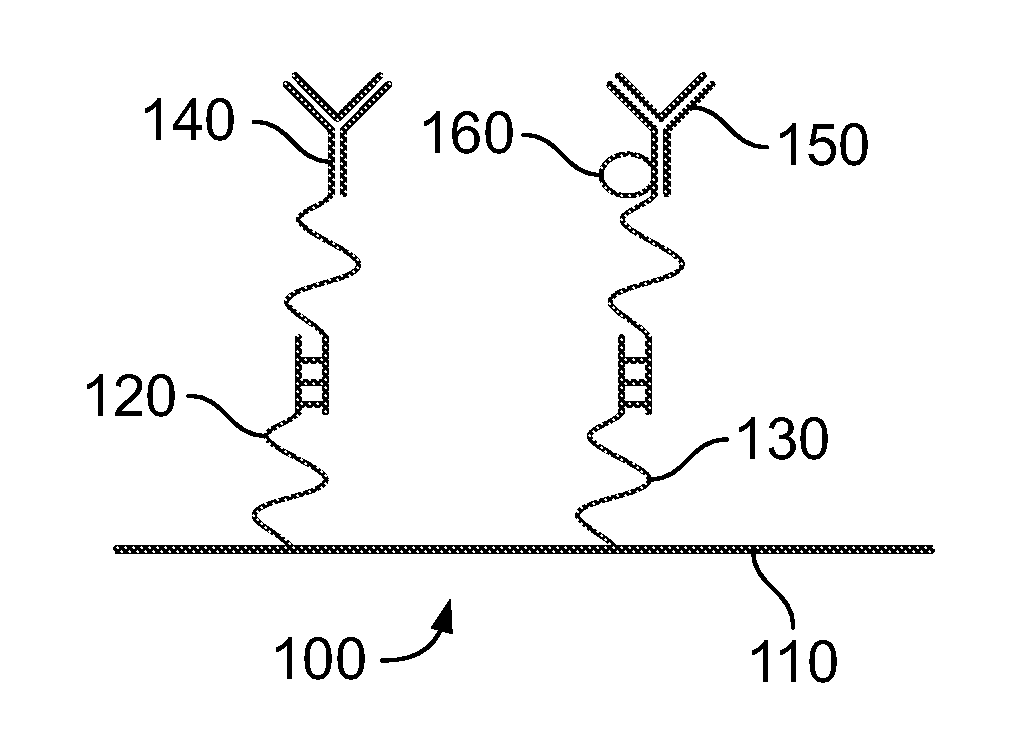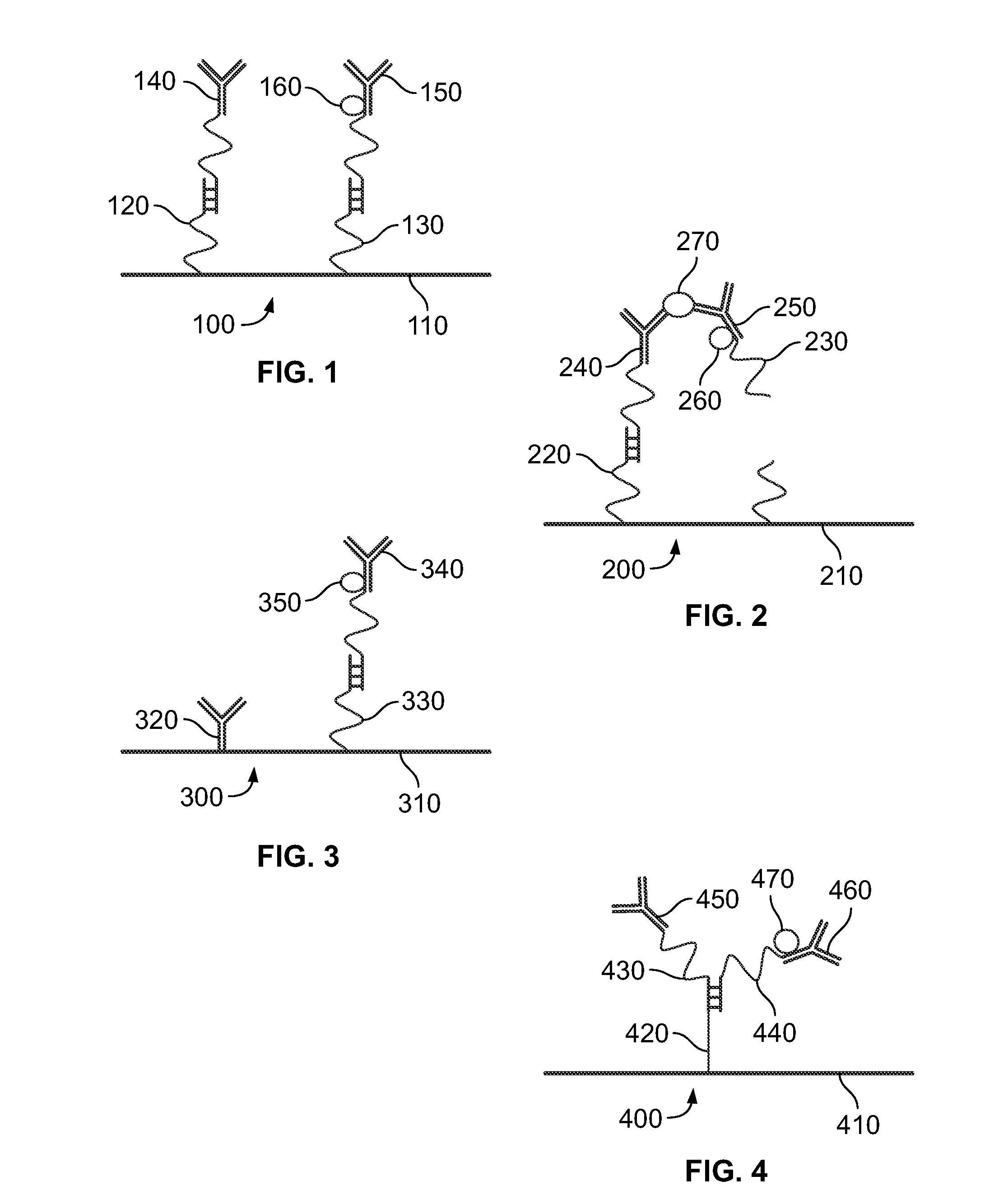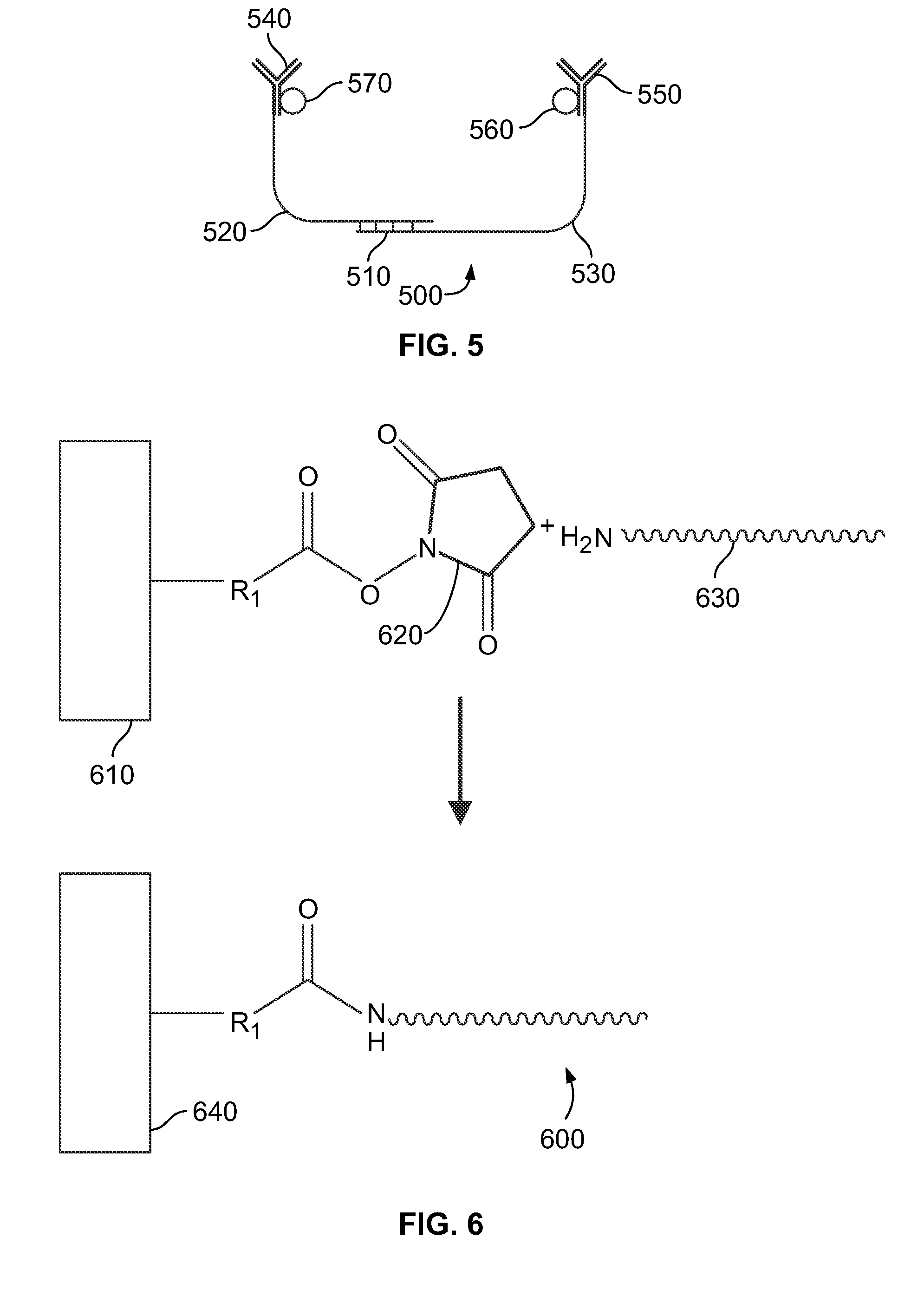Device and method of rapid linker mediated label-based immunoassays
a technology of label-based immunoassays and immunoassays, which is applied in the field of immunoassay analyte detection systems, can solve the problems of further reducing the incubation time of assays, not being able to account for changes in protein expression, and not being able to direct measurement of protein expression
- Summary
- Abstract
- Description
- Claims
- Application Information
AI Technical Summary
Benefits of technology
Problems solved by technology
Method used
Image
Examples
Embodiment Construction
[0026]FIG. 1 illustrates a system with cleavable linkers for detecting analytes 100 according to an embodiment of the present invention. The system 100 includes a solid support 110, a linker 120, a cleavable linker 130, a capture antibody 140, a detection antibody 150, and a detection agent 160.
[0027]The solid support 110 is chemically bound to the linker 120 and the cleavable linker 130. The capture antibody 140 is chemically bound to the linker 120. The detection antibody is chemically bound to the cleavable linker 130 and the detection agent 160.
[0028]In one embodiment, an analyte is introduced to the system 100. The analyte is an antigen with epitopes that bind to a paratrope on both the capture antibody 140 and the detection antibody 150. When the analyte reacts with both paratropes, a complex is formed. Once the complex is formed, the cleavable linker 130 is cleaved. In one embodiment, the cleavable linker 130 is a DNA strand and the strand is cleaved by adding a buffer to the...
PUM
| Property | Measurement | Unit |
|---|---|---|
| pH | aaaaa | aaaaa |
| pH | aaaaa | aaaaa |
| pH | aaaaa | aaaaa |
Abstract
Description
Claims
Application Information
 Login to View More
Login to View More - R&D
- Intellectual Property
- Life Sciences
- Materials
- Tech Scout
- Unparalleled Data Quality
- Higher Quality Content
- 60% Fewer Hallucinations
Browse by: Latest US Patents, China's latest patents, Technical Efficacy Thesaurus, Application Domain, Technology Topic, Popular Technical Reports.
© 2025 PatSnap. All rights reserved.Legal|Privacy policy|Modern Slavery Act Transparency Statement|Sitemap|About US| Contact US: help@patsnap.com



